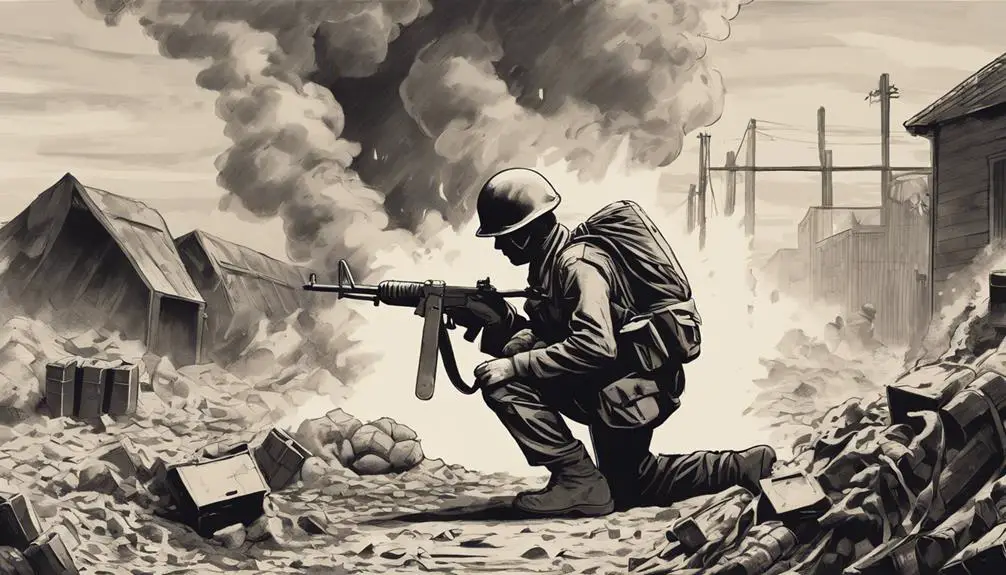When you're on the battlefield, understanding military slang for mortar is essential for effective communication and precise firepower delivery. You'll need to know lingo like 'fall of shot' for adjusting firing data and 'high explosive' for damage on personnel and equipment. Familiarize yourself with grid coordinates and markers, ceasefire and checkfire commands, and mortar team radio procedures. In the heat of combat, clear communication is key to success. As you dig deeper into mortar operations, you'll uncover more specialized language and nuances that can make all the difference in mission success.
Mortar Fire Control Lingo
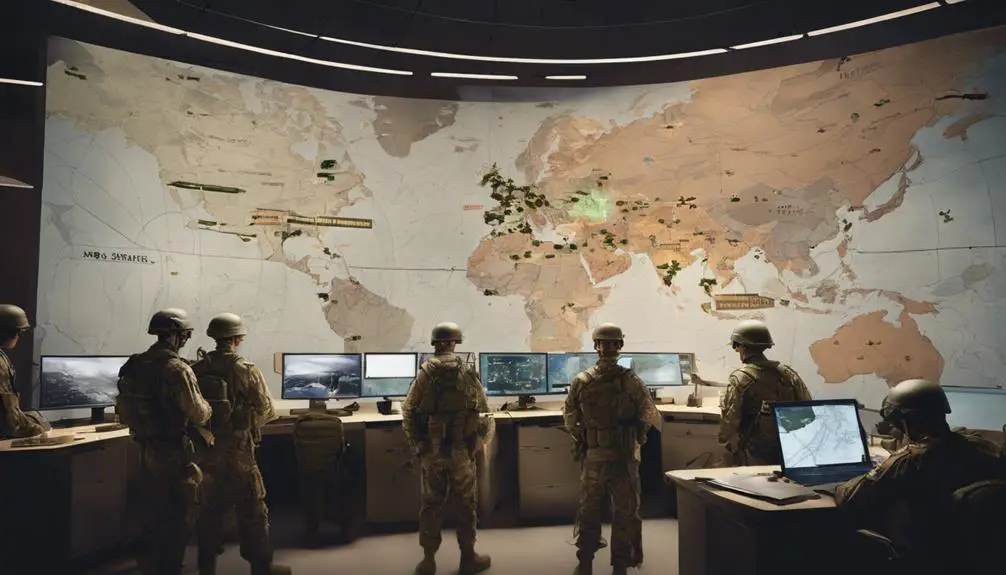
When calling in a fire mission, you'll need to understand the lingo used in mortar fire control, where 'target location' is conveyed using a series of abbreviations and acronyms that denote direction, distance, and type of fire. This specialized language, known as mortar crew lingo, is essential for effective communication between the forward observer and the fire direction center. It guarantees that the mortar crew can accurately deliver firepower to the intended target.
Fire discipline is vital in mortar fire control, as it directly affects the accuracy and effectiveness of the mission. Understanding the lingo helps maintain fire discipline, which is critical in minimizing collateral damage and reducing friendly fire incidents. By using standardized terminology, the mortar crew can quickly and accurately process fire mission requests, ensuring that rounds are delivered on target.
Mastering mortar fire control lingo is essential for any military personnel involved in mortar operations. It's a pivotal component of fire discipline, and its importance cannot be overstated. By understanding the language of mortar fire control, you'll be able to efficiently communicate target locations and deliver precise firepower to support ground operations.
Adjusting the Fall of Shot
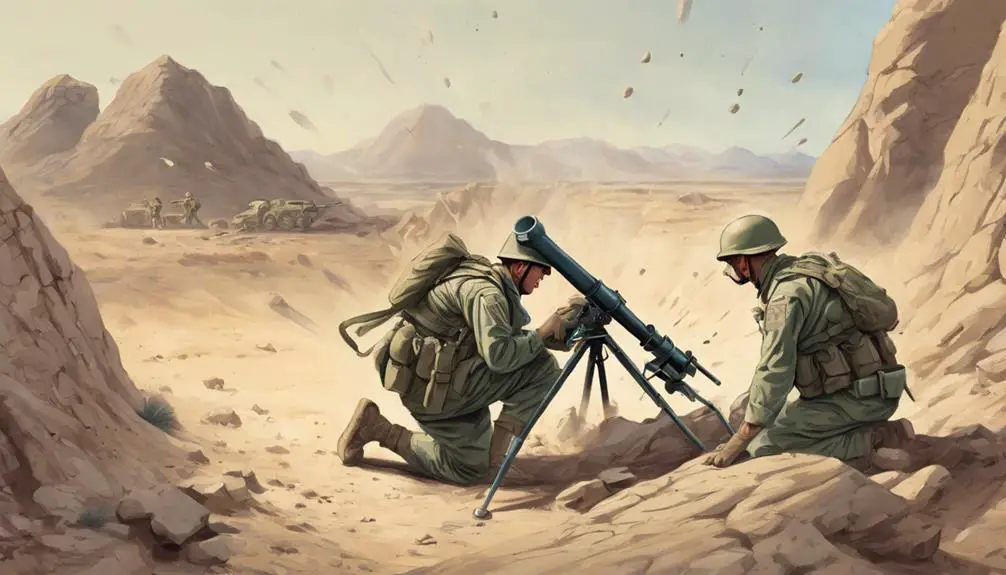
To adjust the fall of shot, you'll need to make precise corrections to the mortar's firing data, taking into account the observed impact point and the desired target location. This process involves analyzing the mortar's calibration methods to make certain accurate firing trajectory adjustments. By doing so, you can refine the mortar's firing data to achieve a more precise impact point.
When adjusting the fall of shot, you'll need to take into consideration factors such as muzzle velocity, propellant temperature, and atmospheric conditions. These factors can impact the mortar's firing trajectory, and making adjustments to these variables can help you achieve a more accurate impact point.
To make these modifications, you'll need to use firing trajectory adjustments, which involve modifying the mortar's firing data to compensate for the observed impact point. This can be done by adjusting the mortar's elevation, deflection, or charge, depending on the specific situation. By making these alterations, you can refine the mortar's firing data to achieve a more precise impact point, increasing the effectiveness of your mortar fire.
Types of Mortar Rounds Explained

Mortar rounds come in various types, each designed to achieve specific effects on the battlefield, and you'll need to understand their differences to optimize your mortar fire. As a mortar crew member, it's essential to recognize the distinct roles of each round type to fulfill your duties effectively.
High Explosive (HE) rounds are the most common type, designed to inflict damage on personnel and equipment. They're typically used for suppressive fire, creating a hazard zone that prevents enemy movement. Illumination rounds, on the other hand, are used for nighttime operations, providing a burst of light to illuminate the battlefield.
Your team will also encounter Smoke rounds, which create a smoke screen to obscure visibility, allowing for tactical maneuvers or escape. When setting fuze settings, you'll need to adjust timing to make sure the round detonates at the desired altitude or impact zone. Understanding these round types and their applications is vital to successful mortar crew duties. By recognizing the strengths of each round, you can adapt your fire support to meet the evolving battlefield situation.
Calling in a Fire Mission
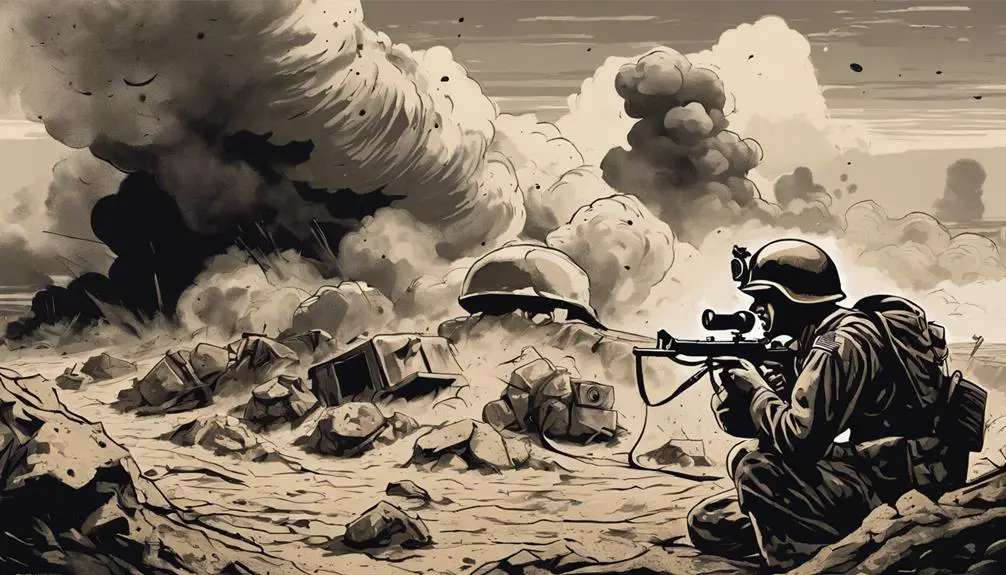
You're about to play a critical role in calling in a fire mission, which depends on accurate communication between you and the fire direction center to guarantee the desired effects on the battlefield. As a fire support officer or artillery observer, your responsibility is to provide accurate target coordinates and mission details to make sure the artillery unit delivers effective supporting fire.
When calling in a fire mission, you'll need to provide essential information, including the target location, type of fire support required, and any specific instructions. This information is vital to the fire direction center, which will then calculate the firing data and transmit it to the artillery unit.
Remember to clearly articulate your transmission, using standardized radio protocols and terminology to avoid miscommunication. Be prepared to answer questions from the fire direction center and provide additional information as needed. Your attention to detail and clear communication will ultimately determine the success of the fire mission.
Grid Coordinates and Markers
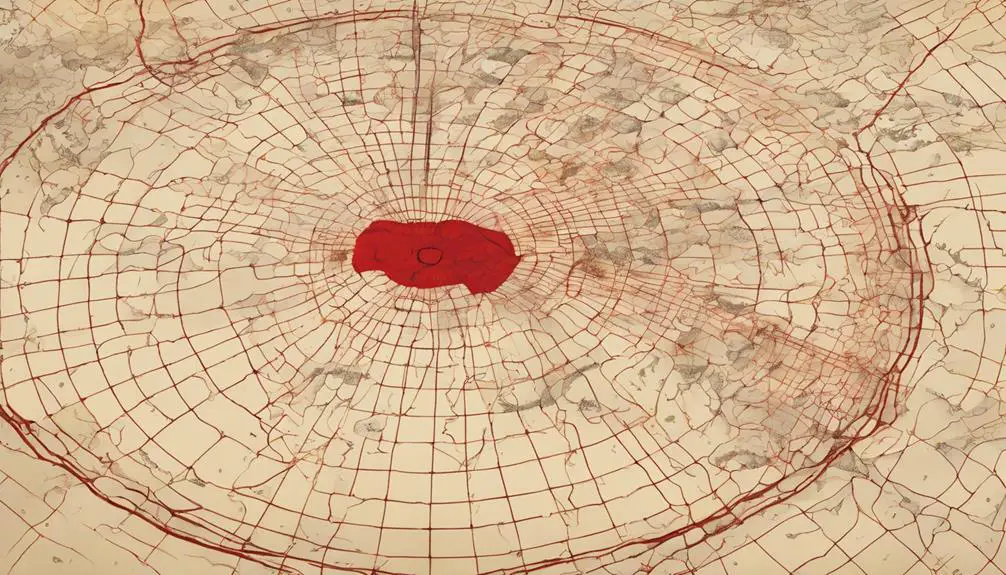
Identify your target location using grid coordinates, which provide a precise reference point for the fire direction center to calculate firing data. As a mortar crew, you'll need to master map reading skills to accurately pinpoint the target location on a military map. This involves breaking down the grid into smaller, manageable sections, using the Universal Transverse Mercator (UTM) grid system or the Military Grid Reference System (MGRS).
When calling in a fire mission, you'll need to provide the fire direction center with precise grid coordinates, including the target's location, altitude, and distance from your position. This information is vital for fire planning, as it enables the fire direction center to calculate the firing data, including the azimuth, elevation, and charge required to hit the target.
Ceasefire and Checkfire Commands
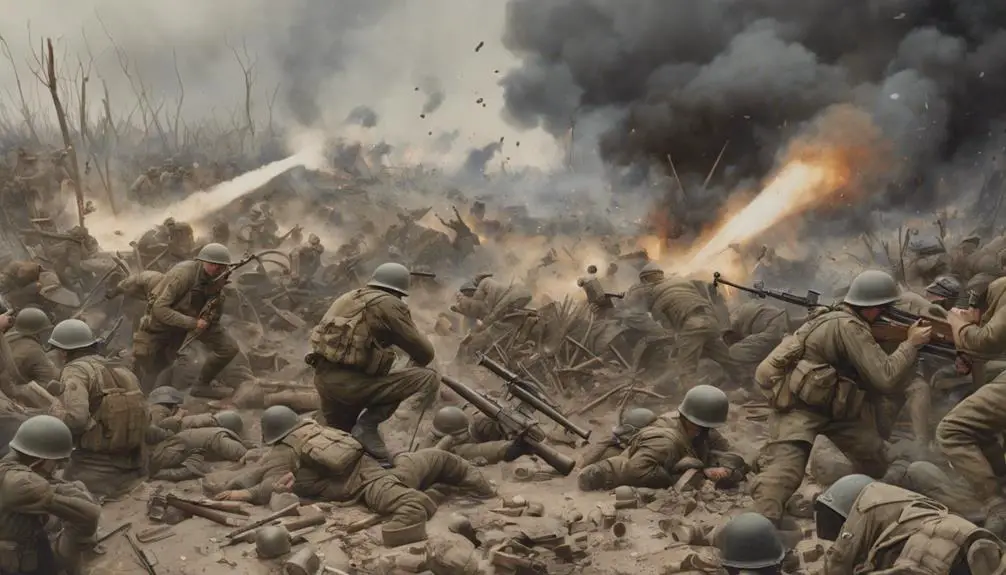
After accurately providing grid coordinates to the fire direction center, you must be prepared to halt or verify fire missions using specific commands, including ceasefire and checkfire. These commands are vital in maintaining fire discipline, ensuring that friendly forces are not inadvertently targeted, and preventing friendly fire incidents. A ceasefire command, also known as 'cease fire,' is used to immediately stop firing, while a checkfire command, or 'check fire,' is used to verify the accuracy of firing data before resuming fire. When you receive a ceasefire command, you must immediately halt firing and wait for further instructions. Conversely, when you receive a checkfire command, you should verify the firing data and report back to the fire direction center before resuming fire. By understanding and executing these commands correctly, you can maintain effective fire discipline and avoid potentially disastrous consequences.
Mortar Team Radio Procedures
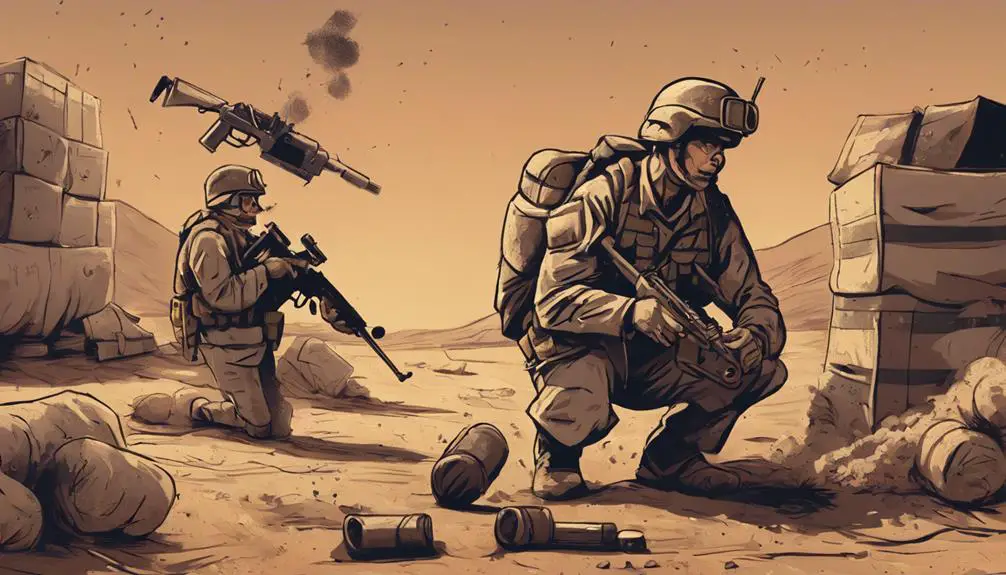
When calling in a fire mission, your mortar team's radio procedures demand precise communication to guarantee accurate and timely execution of the mission. Clear and concise communication is vital to make sure that the firing unit receives accurate targeting information, minimizing the risk of friendly fire or civilian casualties. As a mortar team member, you must adhere to strict radio etiquette, using standardized call signs, frequencies, and communication protocols.
Mortar team discipline is essential in maintaining radio silence during critical periods, such as during target acquisition or when receiving fire mission updates. You must be mindful of your voice tone, avoiding emotional outbursts or loud conversations that could compromise the mission. Additionally, you should use standardized terminology and avoid using slang or jargon that may be misinterpreted by other team members.
Frequently Asked Questions
What Is the Maximum Effective Range of an 81MM Mortar?
You're wondering about the maximum effective range of an 81mm mortar. This depends on various factors, including mortar calibration and the use of firing tables. Typically, the maximum range is around 5,935 meters, but this can vary depending on the specific mortar system and ammunition used. To achieve accurate firing, you'll need to consult firing tables, which provide data on elevation, deflection, and fuze settings for different ranges and charges.
Can Mortar Teams Fire Directly at a Target Without Adjusting?
Imagine yourself on the battlefield, surrounded by the sounds of artillery fire. As a mortar team member, you know that direct firing isn't always an option. In fact, you typically rely on indirect fire calculations to hit your mark. This means you'll need to adjust your aim based on factors like distance, elevation, and trajectory. Without precise mortar team coordination, your shots will fall short. In most cases, you can't fire directly at a target without adjusting; it's a complex process that requires careful planning and calculation.
How Do You Handle a Misfire or Dud Mortar Round?
When handling a misfire or dud mortar round, you'll follow strict procedures to guarantee safety. First, you'll immediately cease all firing and alert your team. Next, you'll establish a safe perimeter, then attempt to identify the dud round. If it's a misfire, you'll follow mortar misfire procedures, which may involve waiting for a specified time before approaching the round. Dud round safety protocols dictate that you don't touch or move the round; instead, you'll call in an explosive ordnance disposal team to handle it.
Are Mortar Teams Responsible for Providing Their Own Security?
You think you're just a mortar team, lobbing rounds downrange, but no, you're also responsible for your own security. It's not all about firing for effect; you need to guarantee your mortar squad's security, too. That means having a Fire Team Escort, a small group of infantrymen who've got your back. They provide the security bubble while you're busy dropping high explosives on the bad guys. It's a team effort, and security is everyone's responsibility.
Can Mortar Teams Fire in Support of Naval Operations?
You're likely wondering if mortar teams can fire in support of naval operations. The answer is yes. As a naval gunfire liaison, you'd coordinate with amphibious assault forces to provide supporting fires. Mortar teams can augment naval gunfire, providing precision firepower during beach assaults or littoral operations. By integrating with naval forces, mortar teams can enhance the overall combat effectiveness of amphibious operations.

